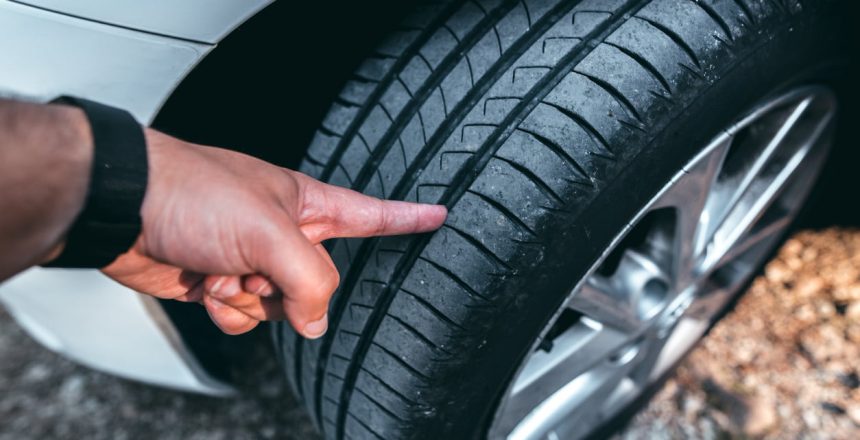Buying the right tires for your car is essential to its overall performance and your safety while driving
Tires are essential vehicle components, and although manufacturers make consistent improvements to the technology, they still require replacement every few years. Generally, tires last 60,000 to 75,000 miles, at which time it’s recommended you begin shopping for a new set.
It’s important to remember, though, that tread life depends on the type of tire, the terrain you’re driving on, the weather, and your driving style. Therefore, keeping an eye on their condition is important because tires could wear out rapidly if you’re an aggressive driver spending a lot of time on bad roads.
When the time comes to replace your rubber, you’ll want to carefully consider your options and select the product that’s best for your vehicle.
Here’s some information on the various tires on the market and what you should know about purchasing the right tires for your car.
Key Takeaways
- Tires are an essential component of your vehicle
- Replacing your tires is necessary every few years
- Having solid rubber streamlines the car shipping process
Do you need new tires?
Before all else, it’s crucial that you figure out if you even need new tires. In some cases, you might feel your car pulling in one direction or the tires slipping when going around a corner, but these symptoms don’t necessarily mean your current tires are shot.
Poor tire performance could result from underinflated tires, poor alignment, or even a slow leak that you can have your mechanic repair if you want to get a couple more years from your current set.
An easy way to determine if new tires are necessary is to check the tread depth using the penny test. This takes a penny and inserts Abraham Lincoln head first into your tire’s most deteriorated section. If you can see the top of Lincoln’s head, your tires are too worn, and it’s time to replace them. You can conduct the same test with a quarter using George Washington’s head, as well.
Keep in mind that some tires come with tread wear indicators. When these indicators are flush with the tread, it means the tire is due for replacement. You can also use a tire tread depth gauge if you have one around.
Another critical thing to remember is that the rubber compound used in tires has a shelf life. While there’s no expiration date on the rubber, you should carefully inspect your tires if they’re over five years old to look for signs of them breaking down. Replace tires once they are ten years old. The production date is on the sidewall.
Types of tires on the market
After determining that you require new tires, the next step is figuring out what type of tire you want to try. Most car owners go with all-season tires because they provide adequate performance in most weather conditions. The result is a solid value tire that offers good handling in sunny and rainy conditions while providing some grip in the winter.
All-season tires have two sub-categories to consider: high-performance and grand touring. High-performance tires offer better grip and sharper handling in ideal conditions, making them a better option for sporty vehicles. Grand touring tires have better winter handling, so they’re more of a true all-season.
Summer tires are another option to consider, although you should note that they’re more of a three-season product. Most summer tires only perform well in weather above 40 degrees Fahrenheit, so you’ll want to be aware of the temperature if you live in a variable climate.
The good thing about summer tires is that they provide the best performance in dry summer weather and offer decent wet handling ability. There are sub-categories to this group, including ultra-high performance, max performance, and extreme performance. Extreme performance is the top-of-the-line product that you’ll often find on luxury sports cars.
Finally, those living in areas with cold, snowy winters should look into winter tires. These products provide maximum traction in the snow and ice, making it far safer to drive in these conditions. However, it’s vital to remember that, while snow tires offer a significant winter-weather improvement, you can still slip if you don’t adjust your driving to the conditions.
Reading the sidewall
As you examine new tires, you’ll see the writing on the sidewall that contains a wealth of information.
First, the sidewalls let you know the tire size, and it’s essential that you get a properly-sized tire for your vehicle. The size includes three numbers: cross-section width, sidewall height ratio, and wheel rim diameter. All three of these numbers must match what you currently have on your car unless the vehicle manufacturer notes otherwise. An example of tire size is 215/65R16.
Next, there’s the load index and speed rating, a sequence that informs you of the maximum amount of weight each tire can support when fully inflated and the top speed the car can travel while supporting that load. The sequence will appear as a number and a letter, such as 98T. You’ll need a chart to figure out what the numbers mean, but a tire rated at 98T means each tire can support 1,653 pounds while traveling at 118 miles per hour.
Other information on the sidewall includes the tread wear grade, where 100 is the baseline, and any number above 100 means the tire offers above-average treadwear. There’s also a traction score — AA being the best and C the worst — and a temperature resistance score between A and C.
There’s a manufacturing date code on the tire, too, with the digits showing the week and year. For example, if the code is 0121, the tires were produced in the first week of 2021.
Buying the right tires
A lot goes into choosing the right tires for your vehicle, so you’ll want to carefully consider your options and research what works best on your car. If you’re planning to ship your vehicle across the country, inspecting your rubber before loading the car on the transport truck makes it more likely to arrive at your destination in drivable condition.
Mercury Auto Transport is a car shipping broker that can provide you with offers from FMCSA licensed and insured carriers. When you need to ship your car anywhere in the country or beyond, be sure to contact us first to receive a quote or speak with one of our auto transport experts.






